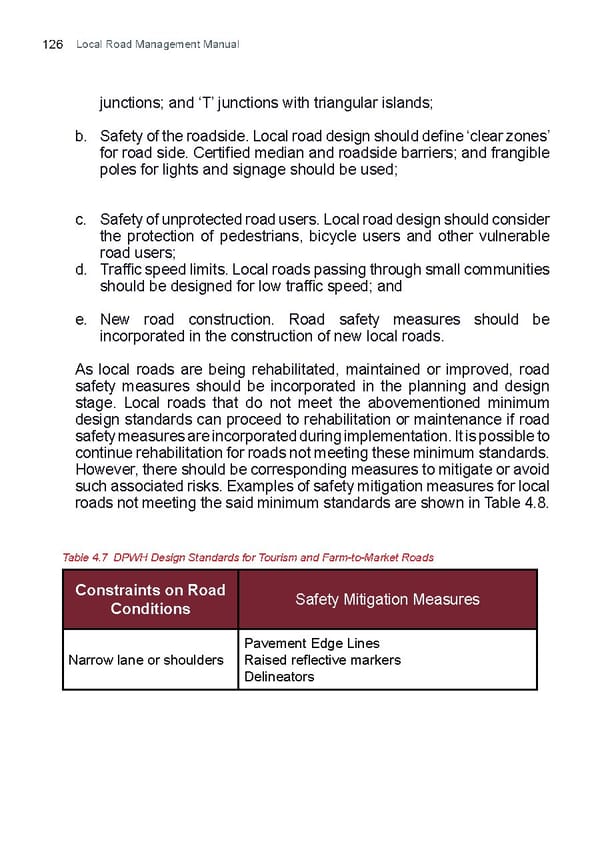Local Road Management Manual 126 junctions; and ‘T’ junctions with triangular islands; b. Safety of the roadside. Local road design should define ‘clear zones’ for road side. Certified median and roadside barriers; and frangible poles for lights and signage should be used; c. Safety of unprotected road users. Local road design should consider the protection of pedestrians, bicycle users and other vulnerable road users; d. Traffic speed limits. Local roads passing through small communities should be designed for low traffic speed; and e. New road construction. Road safety measures should be incorporated in the construction of new local roads. As local roads are being rehabilitated, maintained or improved, road safety measures should be incorporated in the planning and design stage. Local roads that do not meet the abovementioned minimum design standards can proceed to rehabilitation or maintenance if road safety measures are incorporated during implementation. It is possible to continue rehabilitation for roads not meeting these minimum standards. However, there should be corresponding measures to mitigate or avoid such associated risks. Examples of safety mitigation measures for local roads not meeting the said minimum standards are shown in Table 4.8. Table 4.7 DPWH Design Standards for Tourism and Farm-to-Market Roads Constraints on Road Safety Mitigation Measures Conditions Pavement Edge Lines Narrow lane or shoulders Raised reflective markers Delineators
 Local Road Management Manual Page 126 Page 128
Local Road Management Manual Page 126 Page 128